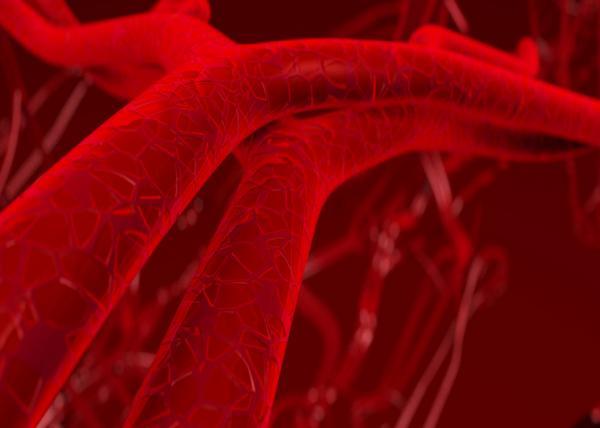Molecule controls blood vessel growth
Researchers from the Southwest UT Medical Center have recently discovered the development and recovery of heart and blood vessel tissue with a strong association with a small segment of ribonucleic acid (RNA) present only in a place in the body.
Because of its distinctive nature for the cardiovascular system, this micro RNA fragment is an attractive potential target for therapeutic therapies.
Dr. Eric Olson, president of the Department of Molecular Biology and author of the study published in August in Development Cell, said: 'Operations on micro RNAs will provide a whole new way to regulate. treatment of cardiovascular disorders'.
MicroRNA (MicroRNA) is a piece that carries small genetic information, which is usually produced by the body, which helps to regulate the process of DNA producing proteins. More than 500 micro RNA fragments have been discovered.
In the current study, the microRNA fragment named miR-126 was centralized, previously it was known to be related to blood vessels. The scientists found that miR-126 is only present in the inner membrane group, which is located on the inner surface of blood vessels.
Membrane cells control the development of newly formed blood vessels in developing embryos, the process of restoring damaged blood vessels as well as the process of blood vessels to support the formation of tumors. Scientists genetically engineered mice that lacked miR-126 and found that about 40% of mice suddenly died before birth or immediately after birth. They have abnormal cardiovascular manifestations such as open or fragile blood vessels.

Researchers have recently discovered the development and recovery of cardiac and vascular tissue that are strongly linked to a small piece of ribonucleic acid (ARN).(Photo: iStockphoto)
However, the surviving mice seemed to be normal and maintained until adulthood. The researchers concluded that miR-126 is important for new blood vessels, but once the cardiovascular system is formed miR-126 is no longer needed to maintain the system.
However, surviving mice have poor recovery ability after a heart attack. Most mice lacking miR-126 died within 3 weeks, while 70% of normal mice survived for at least 3 weeks.
The role of miR-126 in branching of blood vessels is also checked using cultured aorta sections. When cultured with factors that stimulate branching, the aortic segment in normal mice is capable of branching the endothelial cells.
The aorta segment in animals lacking miR-126 is very weak in this regard. Dr. Olson - director of Nancy B's Basic Research Center for Cancer and Jake L. Hamon, and director of the Nearburg family's Center for Pediatric Cancer Research Center, said: 'Research on micro RNAs demonstrating a new boundary in understanding and treating human diseases. This is just a suggestion for what might happen. '
The researchers submitted a number of certifications related to miR-126 and expected to patent them as a therapeutic agent through Miragen Therapeutics - the company is located in Boulder by Dr. Olson co-founded by UT Southwest.
Other collaborators are Dr. Shusheng Wang, a postdoctoral researcher in molecular biology; Dr. Arin Aurora, postdoctoral researcher in molecular biology; graduate student Brett Johnson; Xiaoxia Qi, scientist studying molecular biology; John McAnally, researcher in molecular biology; doctor. Joseph Hill, professor of internal medicine; Dr. James Richardson, professor of pathology; and Dr. Rhonda Bassel-Duby, professor of molecular biology.
The research was funded by the National Institutes of Health, Donald W. Reynolds Cardiovascular Research Center, Sandler Asthma Research Foundation, the Welch Foundation and the American Heart Association.
- Molecular control of blood pressure
- Gene controls plant growth
- Announcing important findings about liver cancer
- Detecting molecule Bim cut blood supply nourishing cancer cells
- Scientists found a molecule of life in the middle of the universe
- Multi-trait growth helps regenerate blood cells
- The truth about heart disease and stroke
- Why is young blood a medicinal god helping
- Molecular detection helps extract stem cells for blood cancer treatment
- The new molecule can cool the Earth
- Robot sucks blood from the skull
- Neurological growth protein against heart disease
 Green tea cleans teeth better than mouthwash?
Green tea cleans teeth better than mouthwash? Death kiss: This is why you should not let anyone kiss your baby's lips
Death kiss: This is why you should not let anyone kiss your baby's lips What is salmonellosis?
What is salmonellosis? Caution should be exercised when using aloe vera through eating and drinking
Caution should be exercised when using aloe vera through eating and drinking